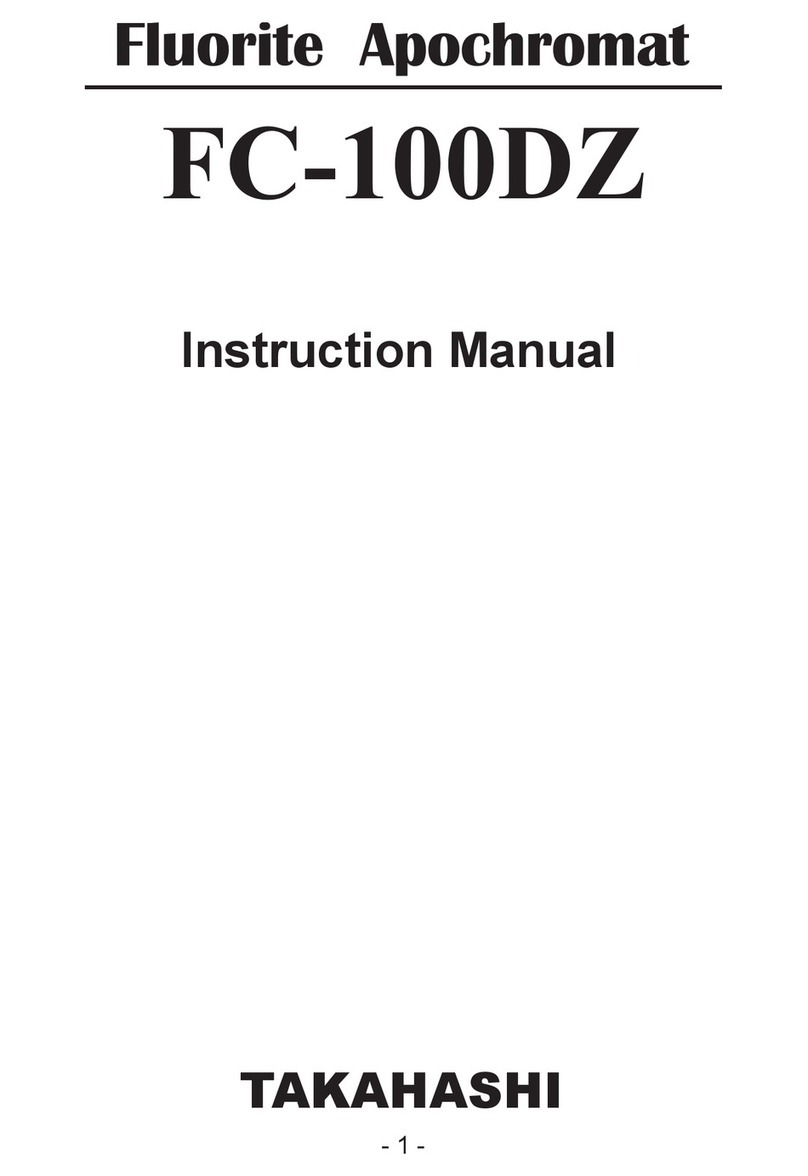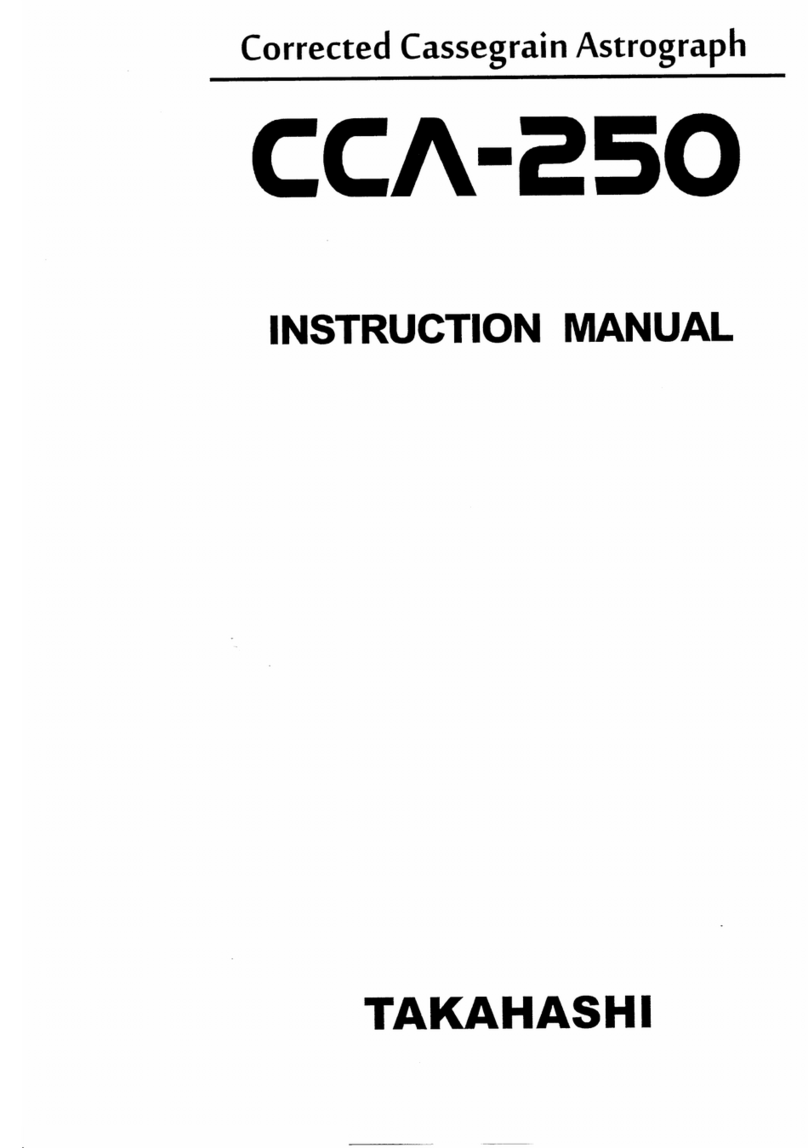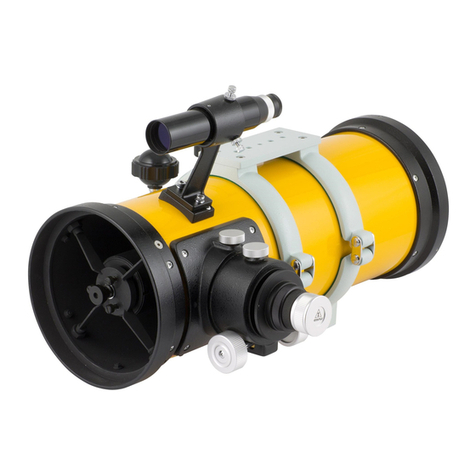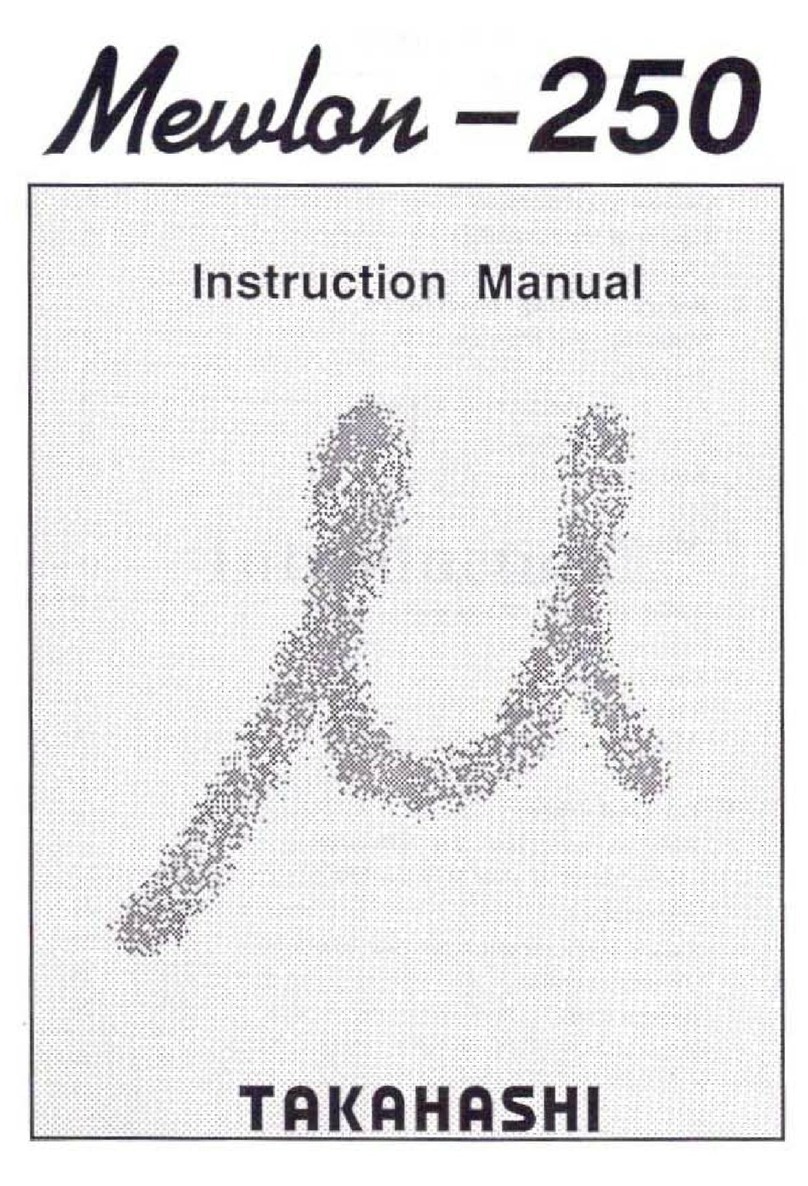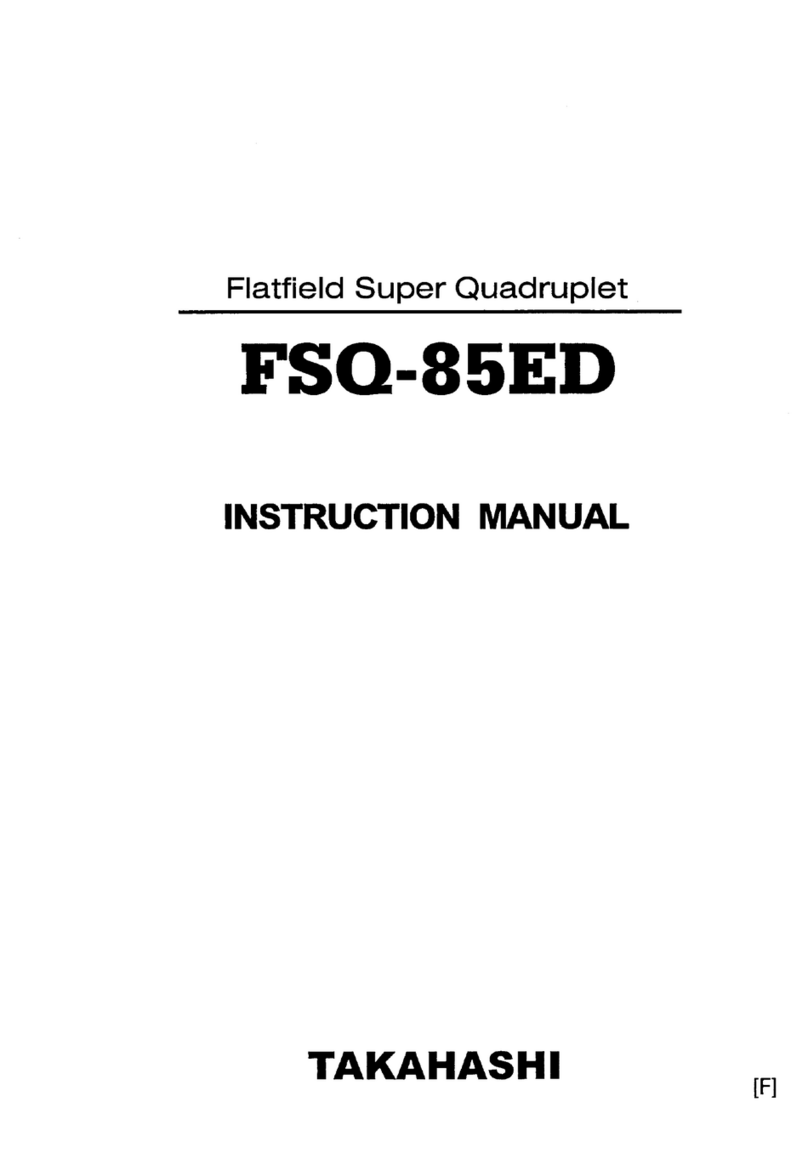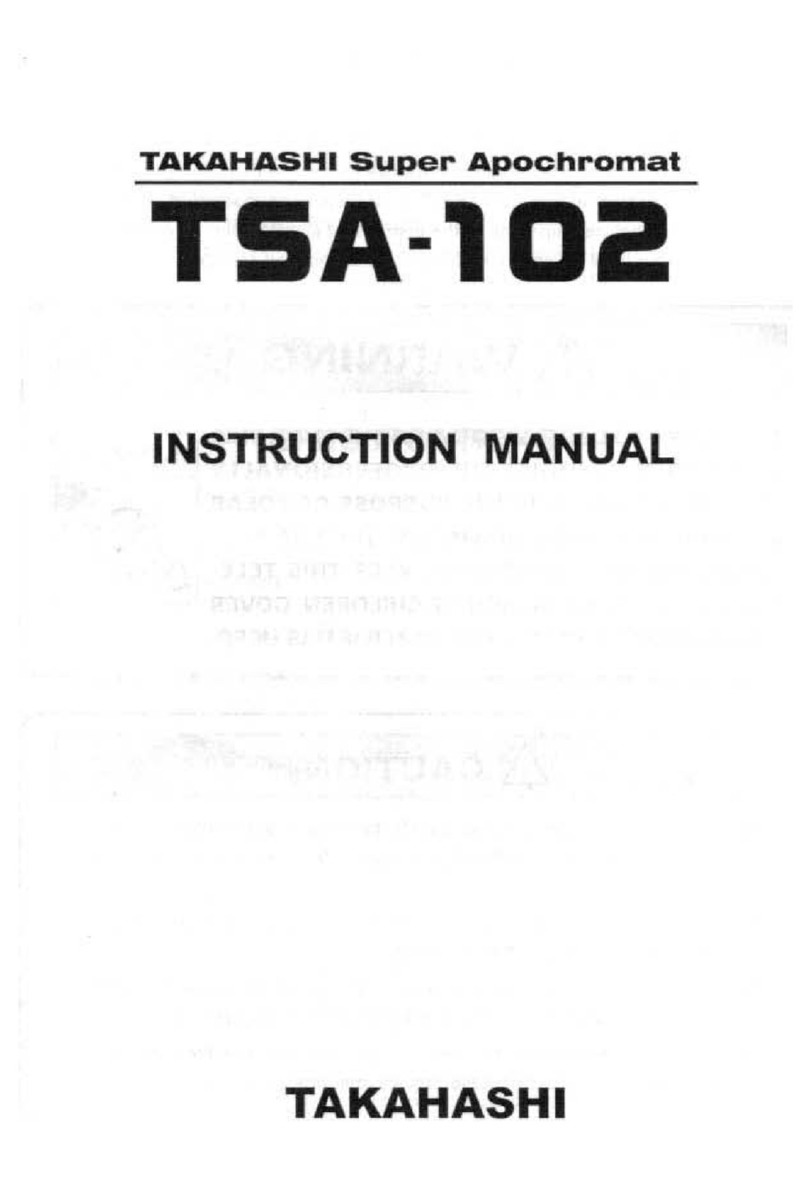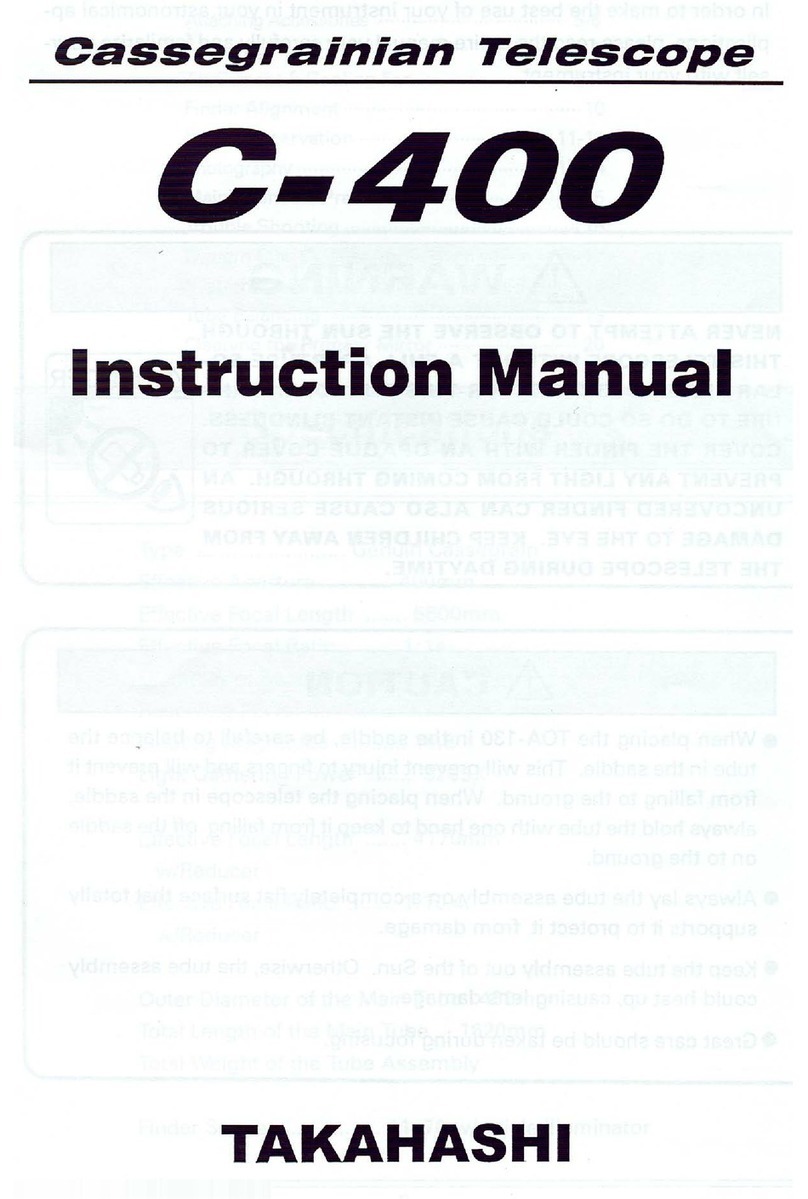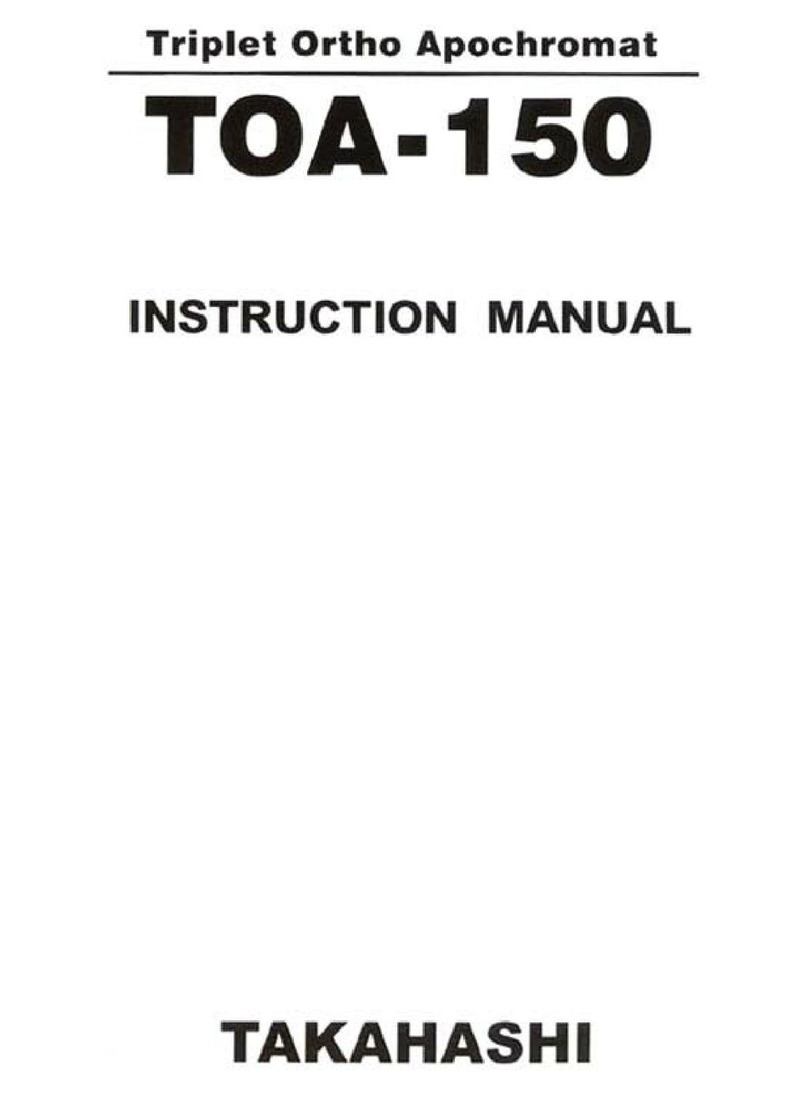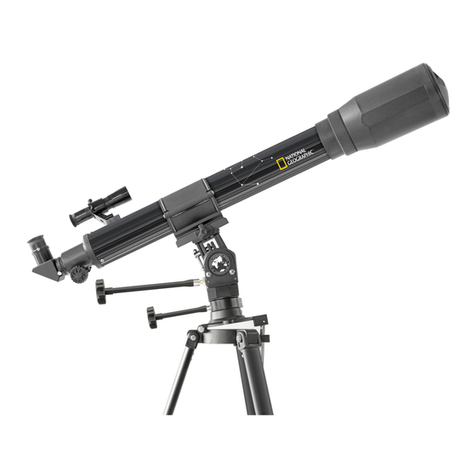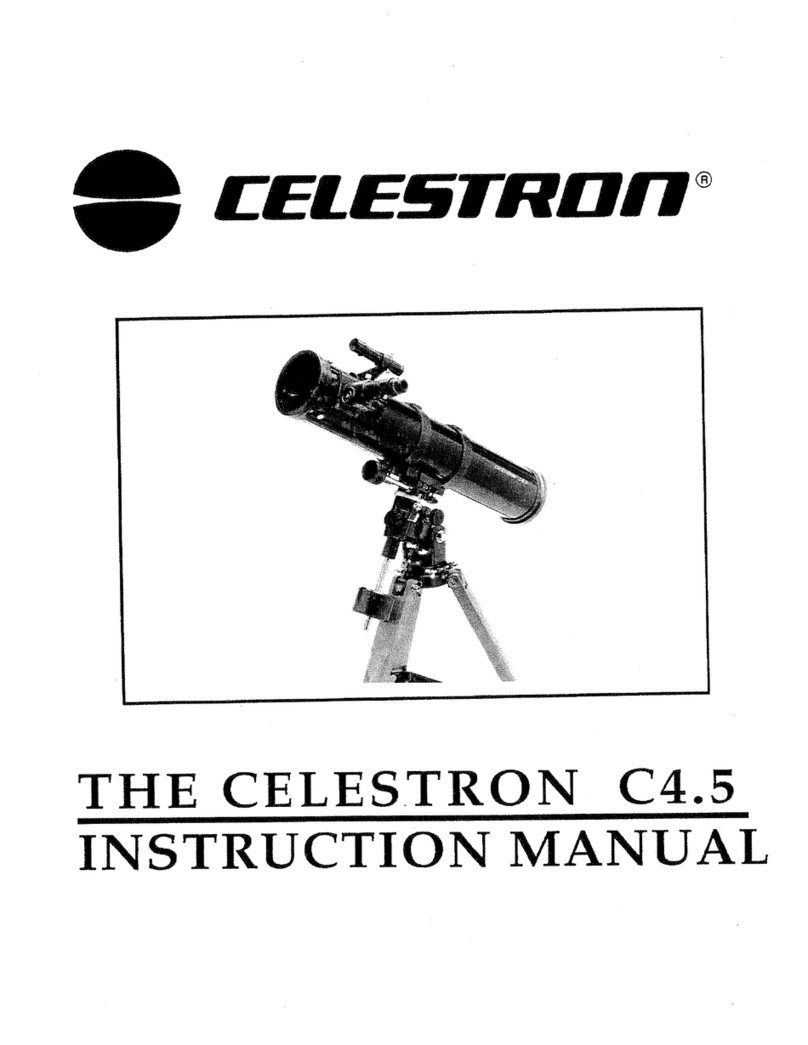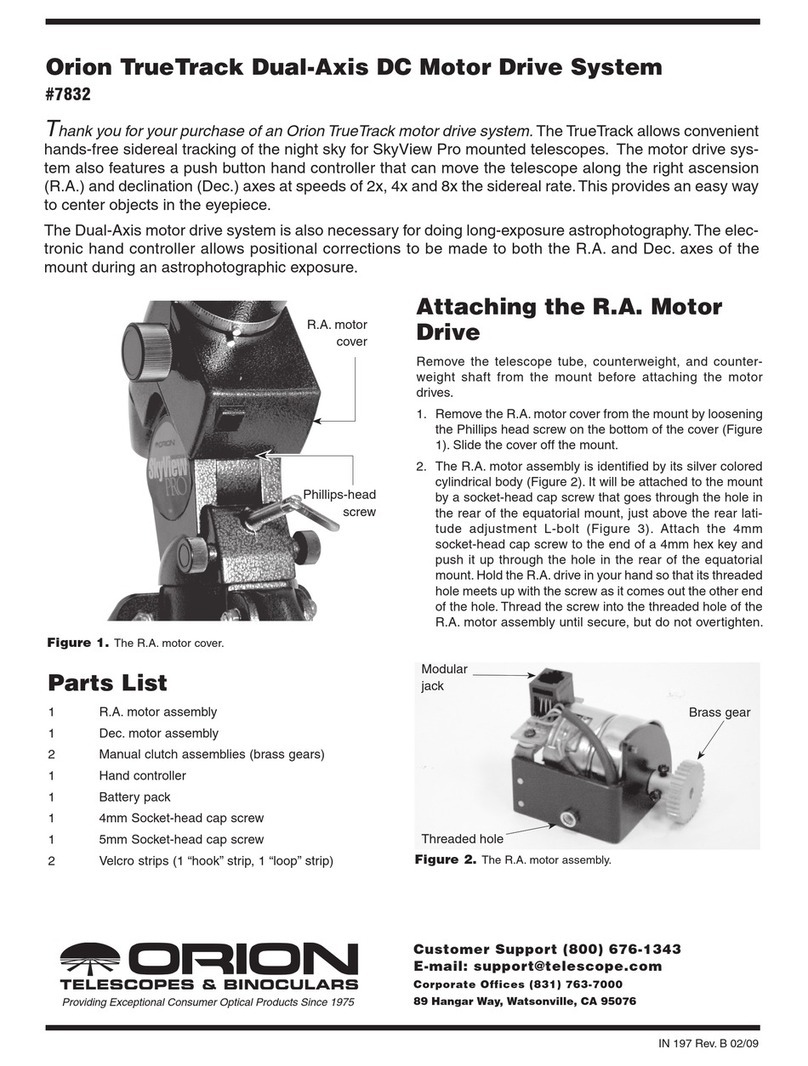
- 7 -
Features
The Mewlon-180C is a Dall-Kirkham optical
system best used visually for lunar and
planetary observation, as well as imaging,
and can be used for observation of deep
space objects. The classical Cassegrain
optical system uses a parabolic concave
primary mirror and a convex hyperbolic
secondary. This design eliminates spherical
aberration, but it is difficult to produce the
hyperbolic secondary and collimation is
difficult. The Dall Kirkham design uses
a concave elliptical primary mirror and a
convex spherical secondary, so that any
spherical aberration is corrected by this
design approach using both mirrors for
correction.
There is only trace spherical aberration in
the center of the field of view of the Dall
Kirkham, but towards the edge, there is
increasing coma. In order to minimize the
coma, the magnifying ratio of the secondary
should be made smaller. The Mewlon-180C
is designed with a long focal ratio of f/12
with an f/3 primary, a 4x secondary, plus an
additional 10 baffles in the primary mirror
baffle to reduce internal reflections and off
axis coma.
The Dall Kirkham optical design is best
suited for lunar and planetary viewing as
well as the observation of small deep space
objects that require higher magnification.
However, the Dall-Kirkham is capable
of producing images as good as those
produced by a Newtonian reflector. This
design can produce images visually, and
by using CCD camera, Takahashi has
successfully developed a compact and easy
to use telescope for planet images of the
highest quality.
Th e s phe ric a l sec ond a ry mi rro r has
allowed the mirror making, assembling, and
adjusting of the Dall-Kirkham to become
easier. This has enabled Takahashi to
provide high performance on a continuous
basis. Additionally, a paring system is
used to insure the best match between
the primary and the secondary as they
are produced as closely possible at the
same time and due to this pairing, there is
no quality difference between the mating
mirrors. The new HR multi-layer mirror
coating increases reflectivity by 7% as
compared to the original Mewlon-180.
The Mewlon-180C tube is an open tube
telescope. Since there is no corrector plate
over the front of the tube, the mirror can
equalize with the ambient temperature which
will stabilize quickly, and the air inside the
tube will stabilize turbulence. The Mewlon-
180C, with its long focal length, will produce
sharp high contrast images of the Moon and
planets. Ten baes have been placed inside
the primary baffle tube to produce images
with great contrast and excellent sharpness.
When the tube assembly is attached to the
mount, the Mewlon holder has one part, the
dove-tail attached to the tube assembly and
the detached saddle plate which is attached
to the mount. The tube assembly can be
conveniently attached and removed from
the mount, using this dove-tail system.
